Stanford Libraries exhibition spotlights Italian Renaissance art
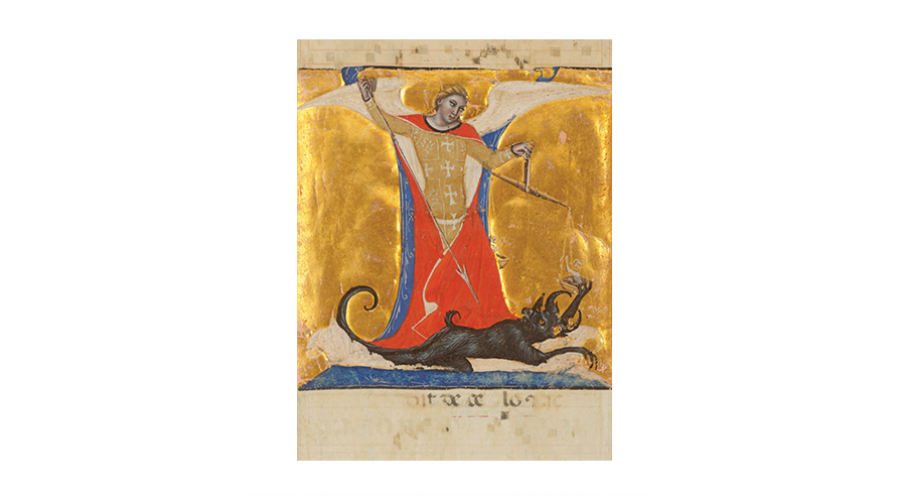
Stanford students from Music 159J and members of the ensemble Cut Circle joined together to sing from a perfectly preserved 15th-century Florentine chant manuscript for the musical opening of The Illuminated Page: Manuscripts from the Burke Collection, 1150-1550. The exhibition highlights the creativity of early Italian art and how those artistic ideas sparked the Renaissance and a profound cultural shift across Europe.
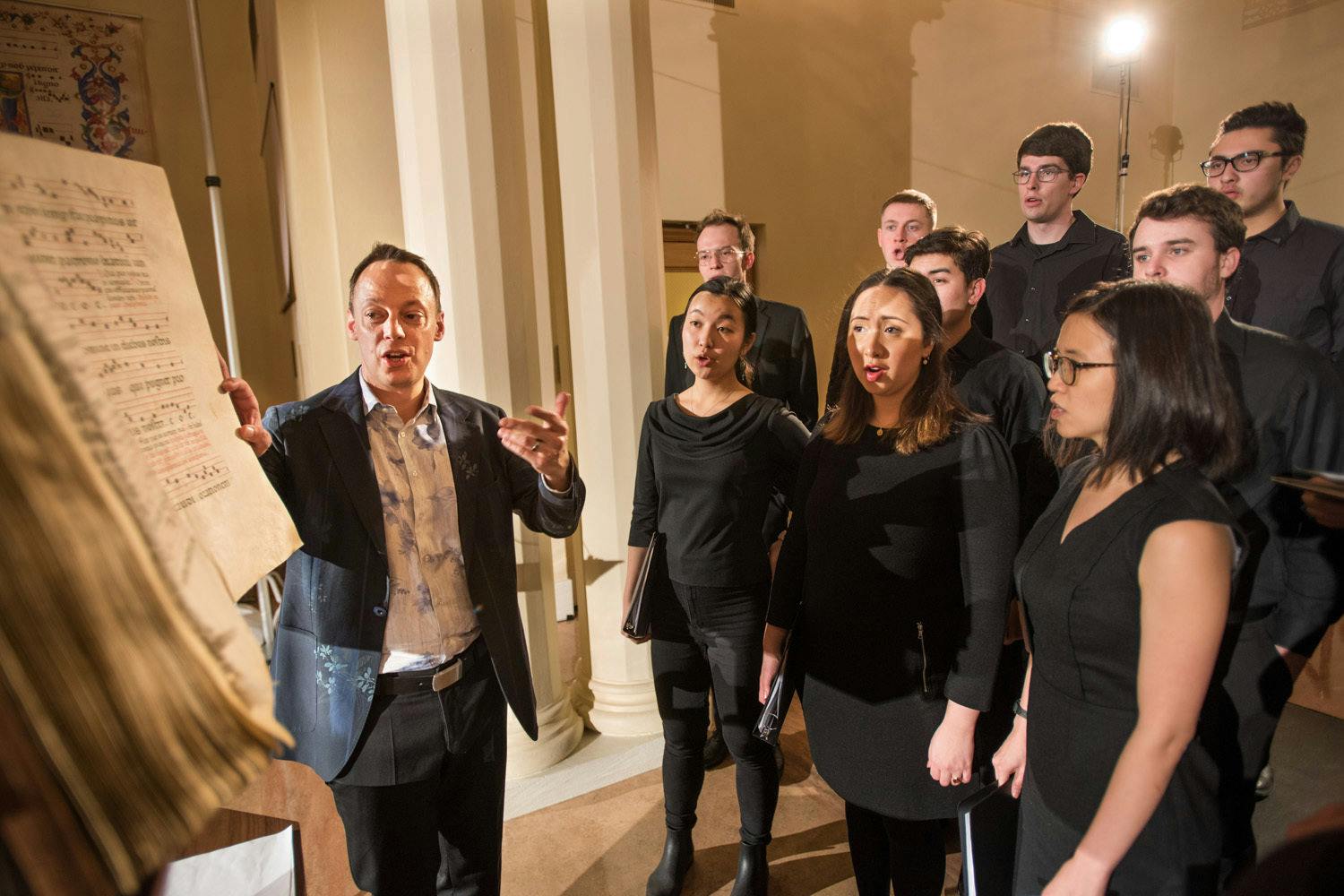
The exhibition celebrates the world-class collection of Italian manuscript decoration built by T. Robert and Katherine States Burke and currently on deposit at Stanford Libraries’ Special Collections.
The Renaissance was a period of European cultural, artistic, political and economic “rebirth” following the Middle Ages from the 14th century to the 17th century. The exhibition explores how artistic concepts moved from city to city in Europe, noting key differences in regional influence, creative vision, religious institutions, and book production methods.
Most of the works on display in The Illuminated Page are paintings that were originally created to adorn Italian choir books during the late Middle Ages and early Renaissance.
Art, music, books
Among its entries, The Illuminated Page depicts how Florence, Italy, became a center of manuscript and book production; the beginning of the Book of Genesis and the subsequent fall of man; Cicero and the classically-driven humanist movement of the 14th century; contrasting scenes from the life of Christ; the Camaldolese monastic order’s contributions to producing manuscripts and liturgical books; the works of Giovanni di Paolo; and musical composition books from Vincenzo Capirola. Other notable works include the 12th-century St. John the Evangelist, produced in Florence by an artist known only as The Gaddiana Master, and the 16th-century Saint Paul by Giulio Clovio.
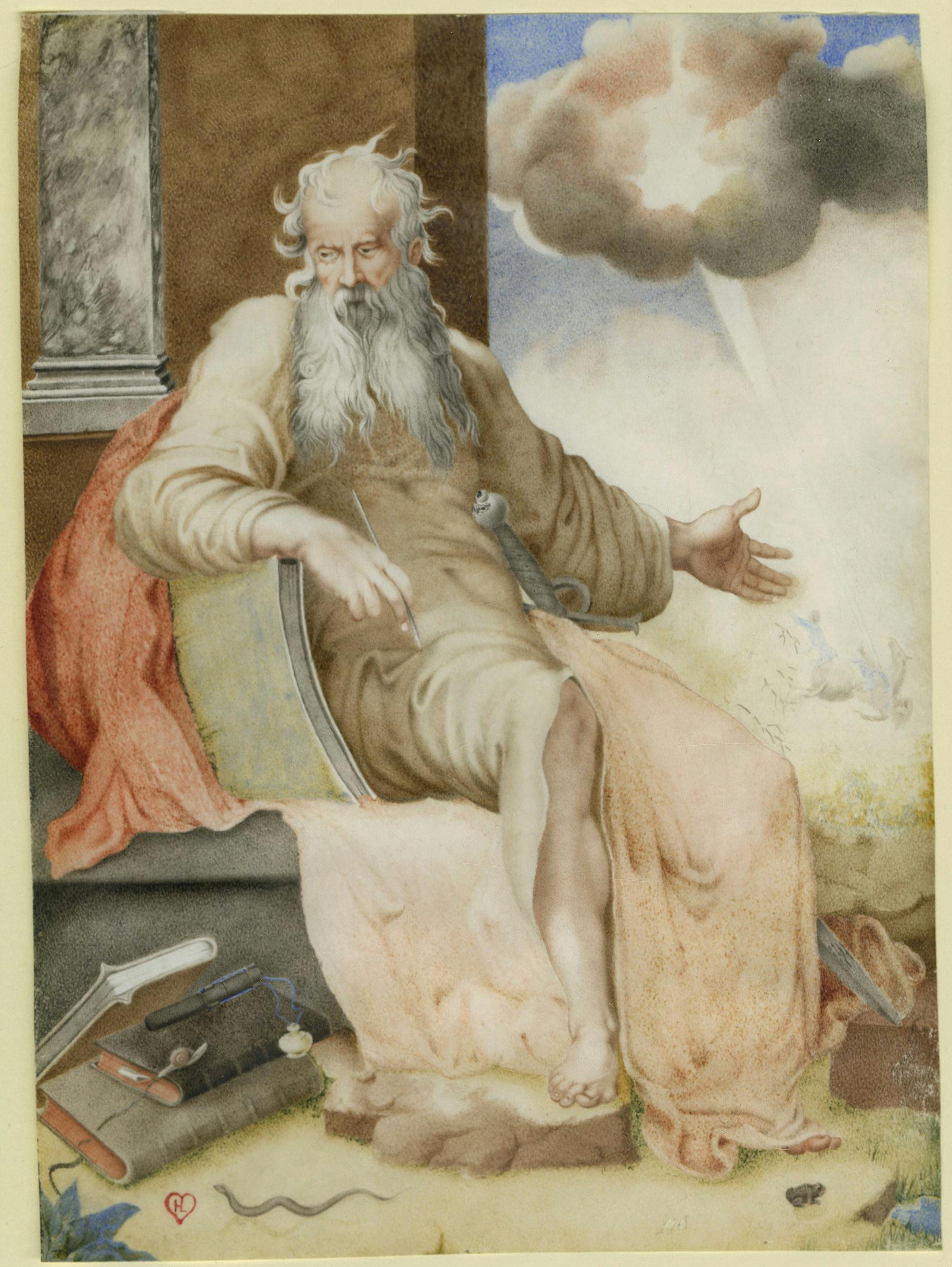
Overall, The Burke Collection of Early Italian Miniatures includes 41 miniatures, two complete codices, and two panel paintings. Most of the works are paintings in tempera, which involve pigment ground in a water-miscible medium, or on vellum, also known as “miniatures,” which refers to their function as illustrations within a text rather than their actual size (deriving from the Latin “minium,” which was the red pigment used to decorate significant letters in early manuscripts).
‘Historical importance’
T. Robert Burke, the collector along with Katherine State Burke, said, “To my surprise, I learned that it was possible to acquire paintings by notable Renaissance artists that had been commissioned as part of the decoration of these several-hundred-year-old manuscripts. The age, beauty, and historical importance of the works attracted me greatly, perhaps because I had studied the art and history of this period for six months in Italy (as a Stanford undergraduate), and perhaps for aesthetic and subjective reasons I do not yet fully understand.”
In 1962 as a Stanford sophomore in the Stanford Overseas Studies program, Robert Burke spent time in Florence, Italy. In 1996, Bob and Kathy Burke began building their collection after a visit to the 1996 Antiquarian Book Fair in San Francisco. Over the next 20 years, they expanded their collection with new discoveries, eventually focusing on the period of time in Italy that marked the shift from the medieval period to the Renaissance. In 2017, the Burkes deposited their works in the Special Collections at the Stanford Libraries.
Research focus
The Illuminated Page is curated by Benjamin Albritton, rare books curator for Stanford Libraries and produced by Special Collections exhibitions designer, Deardra Fuzzell.
Albritton said, “The Burke Collection is one of the largest and finest collections of Italian manuscript painting in private hands in North America. These are the sorts of materials that usually wind up in the top museums of the world, so to have them on deposit here, readily available for research and teaching, really is a special thing for an institution like Stanford.”
The Burkes’ decision to make the collection available to faculty and students for research and educational purposes gives it an added distinction, he said.
“It is a rare thing for a scholar to have access to a handful of similar items at any given time, but the joy with which Bob and Kathy share their materials, and the pleasure they clearly take when they see people engaging with the collection they built, is unique. We've already had several graduate students working closely on materials in the collection,” Albritton said.
Elaine Treharne, faculty director of Stanford’s Text Technologies, led a symposium with other scholars that explored the art of manuscript illuminators, working in the context of liturgical choirbooks, from a variety of perspectives.
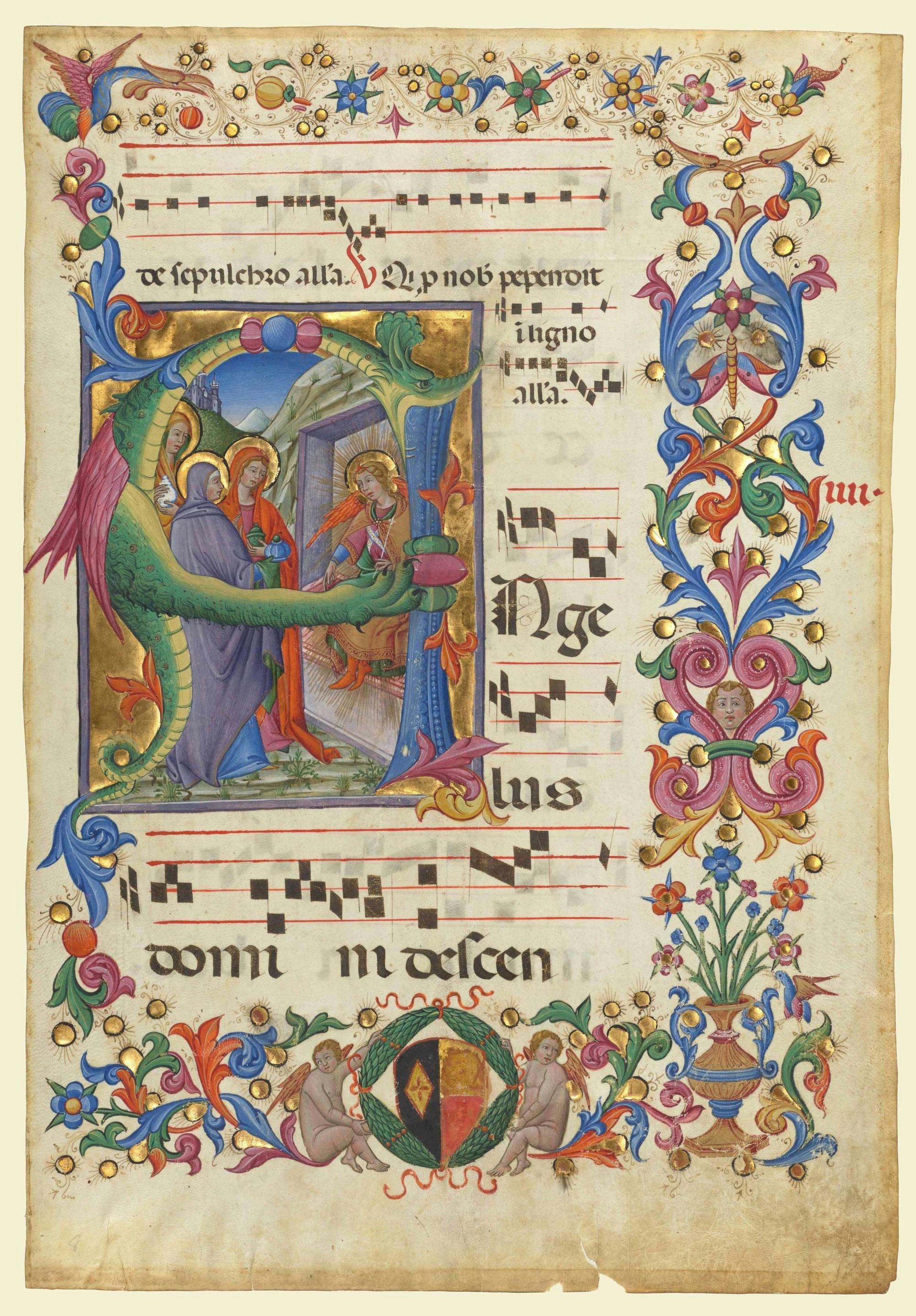
“The exhibition brings into dramatic view artistic and manuscript sources that will advance our understanding of the significance of high-quality artistry to embellish religious offices and to demonstrate the expertise and wealth of individual institutions; it will intrigue and delight in equal measure and is not to be missed.”
The performance of music based on the Burke Collection that opened the exhibit was led by Jesse Rodin, associate professor in the Department of Music. University Librarian Michael Keller encouraged Rodin’s use of Green Library as a performance space for his students and professional group. Rodin’s students assembled in Green library to engage with learn from an Antiphonal from the parish at Santa Maria sopra Porta prior to performing.
Rodin said, “The Burke collection – above all the massive chant book from which we performed – allowed us to replicate the experience of a 15th-century singer. We used the collection to learn their tunes; and we marveled at the sumptuously decorated initials they would have seen day after day. In so doing, we can better understand their musical world.”
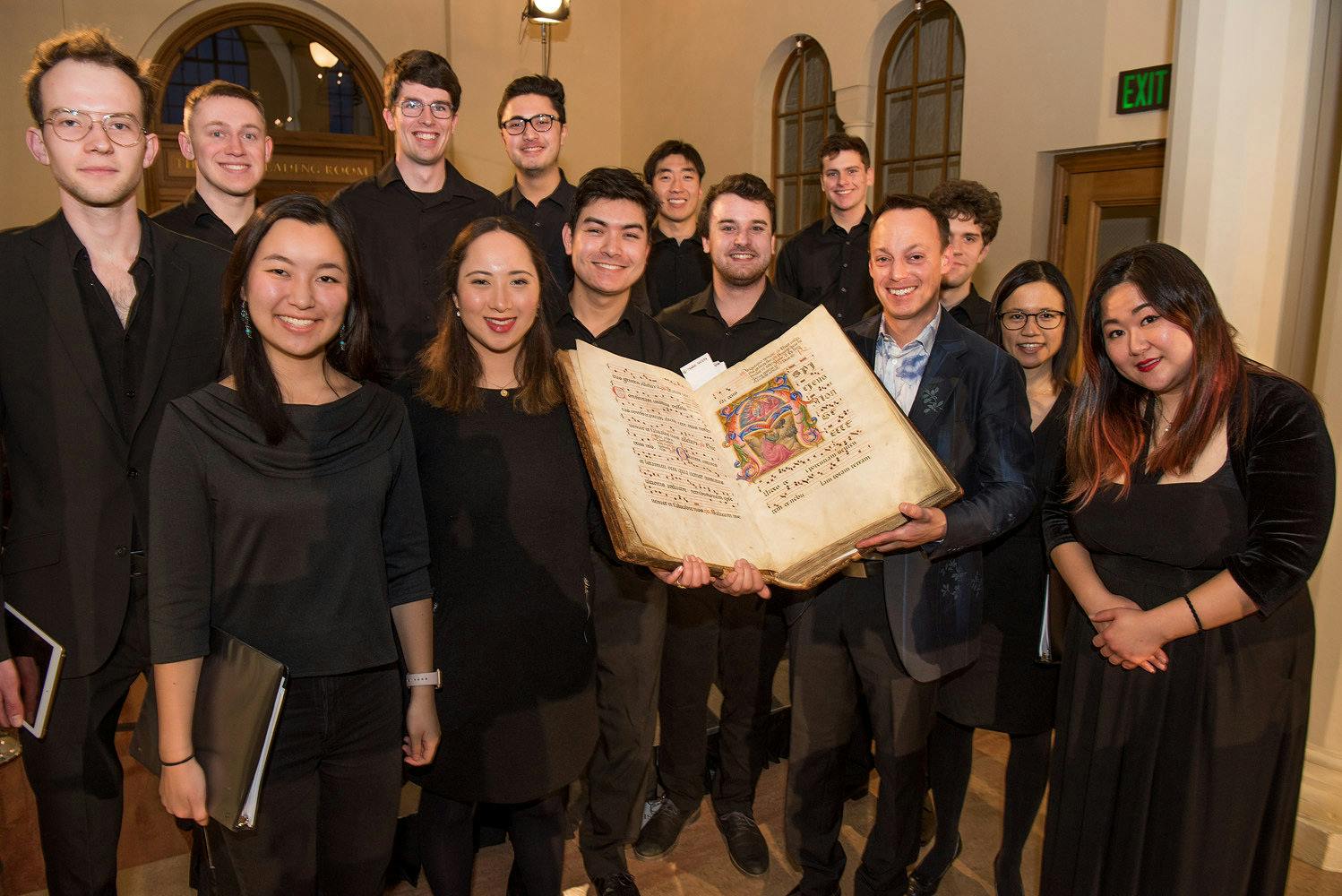
More information
The Illuminated Page is on display in the Peterson Gallery and Munger Rotunda January 15 to April 15, 2020 from 10 a.m. to 6 p.m. The exhibition is free and open to the public. Visitors can call 650–723–0931 or visit the Library Hours page for more information. First-time visitors and those without Stanford ID must register using a government-issued ID at the Green Library.